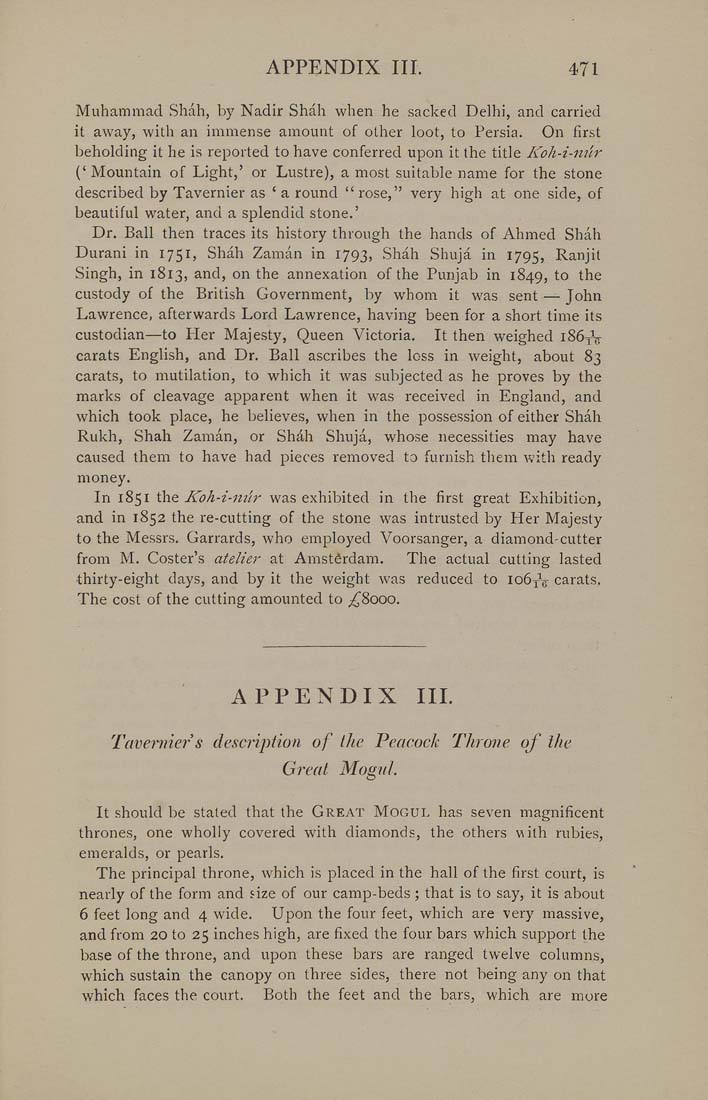APPENDIX IIL 471
Muhammad Shah, by Nadir Shah when he sacked Delhi, and carried
it away, with an immense amount of other loot, to Persia. On first
beholding it he is reported to have conferred upon it the title Koh-i-ntir
(' Mountain of Light,' or Lustre), a most suitable name for the stone
described by Tavernier as ' a round "rose," very high at one side, of
beautiful water, and a splendid stone.'
Dr. Ball then traces its history through the hands of Ahmed Shah
Durani in 1751, Shah Zaman in 1793, Shah Shuja in 1795, Ranjil
Singh, in 1813, and, on the annexation of the Punjab in 1849, to the
custody of the British Government, by whom it was sent — John
Lawrence, afterwards Lord Lawrence, having been for a short time its
custodian—to Her Majesty, Queen Victoria. It then weighed i86yV
carats English, and Dr. Ball ascribes the loss in weight, about 83
carats, to mutilation, to which it was subjected as he proves by the
marks of cleavage apparent when it was received in England, and
which took place, he believes, when in the possession of either Shah
Rukh, Shah Zaman, or Shah Shuja, whose necessities may have
caused them to have had pieces removed to furnish them with ready
money.
In 1851 the Koh-i-mir was exhibited in the first great Exhibition,
and in 1852 the re-cutting of the stone was intrusted by Her Majesty
to the Messrs. Garrards, who employed Voorsanger, a diamond-cutter
from M. Coster's atelier at Amsterdam. The actual cutting lasted
thirty-eight days, and by it the weight was reduced to 106^^ carats.
The cost of the cutting amounted to £%aao.
APPENDIX IIL
'Tavernier s description of the Peacock Throne of the
Great Mogul.
It should be staled that the Great Mogul has seven magnificent
thrones, one wdiolly covered with diamonds, the others v^ilh rubies,
emeralds, or pearls.
The principal throne, which is placed in the hall of the first court, is
nearly of the form and size of our camp-beds ; that is to say, it is about
6 feet long and 4 wide. Upon the four feet, which are very massive,
and from 20 to 25 inches high, are fixed the four bars which support the
base of the throne, and upon these bars are ranged twelve columns,
which sustain the canopy on three sides, there not being any on that
which faces the court. Both the feet and the bars, which are more
|








